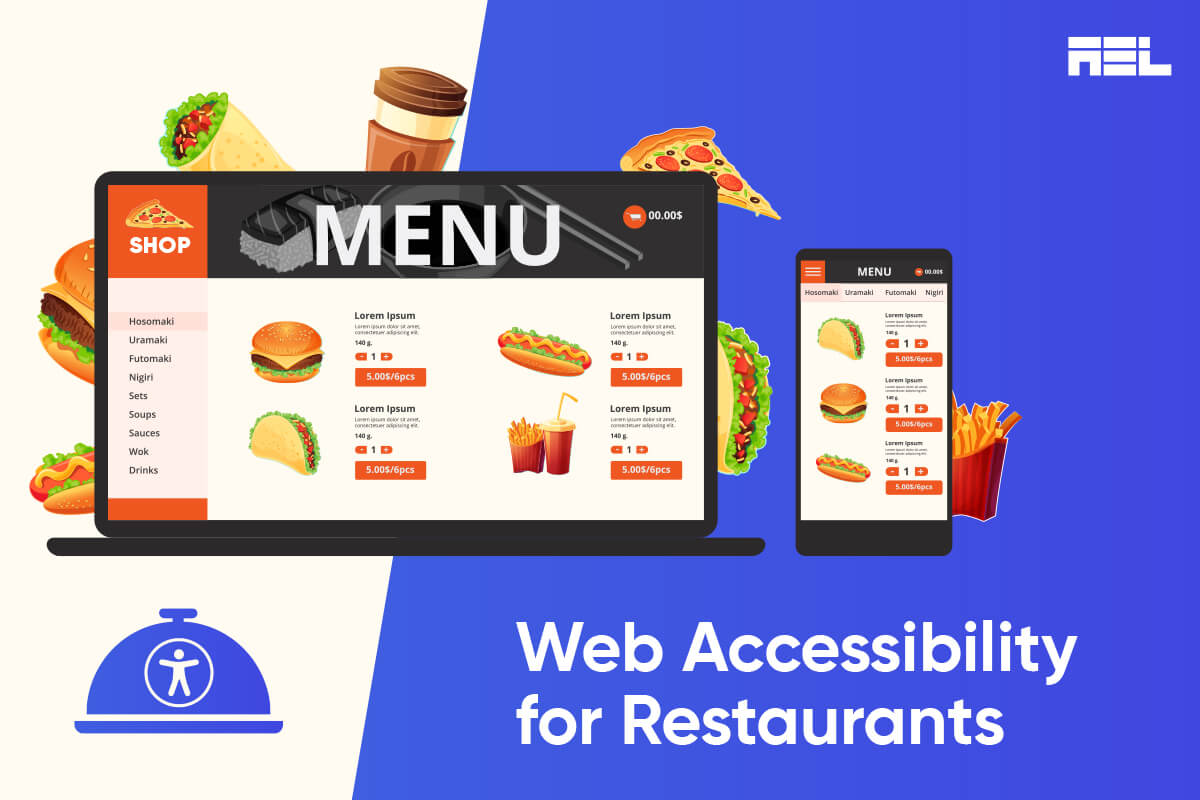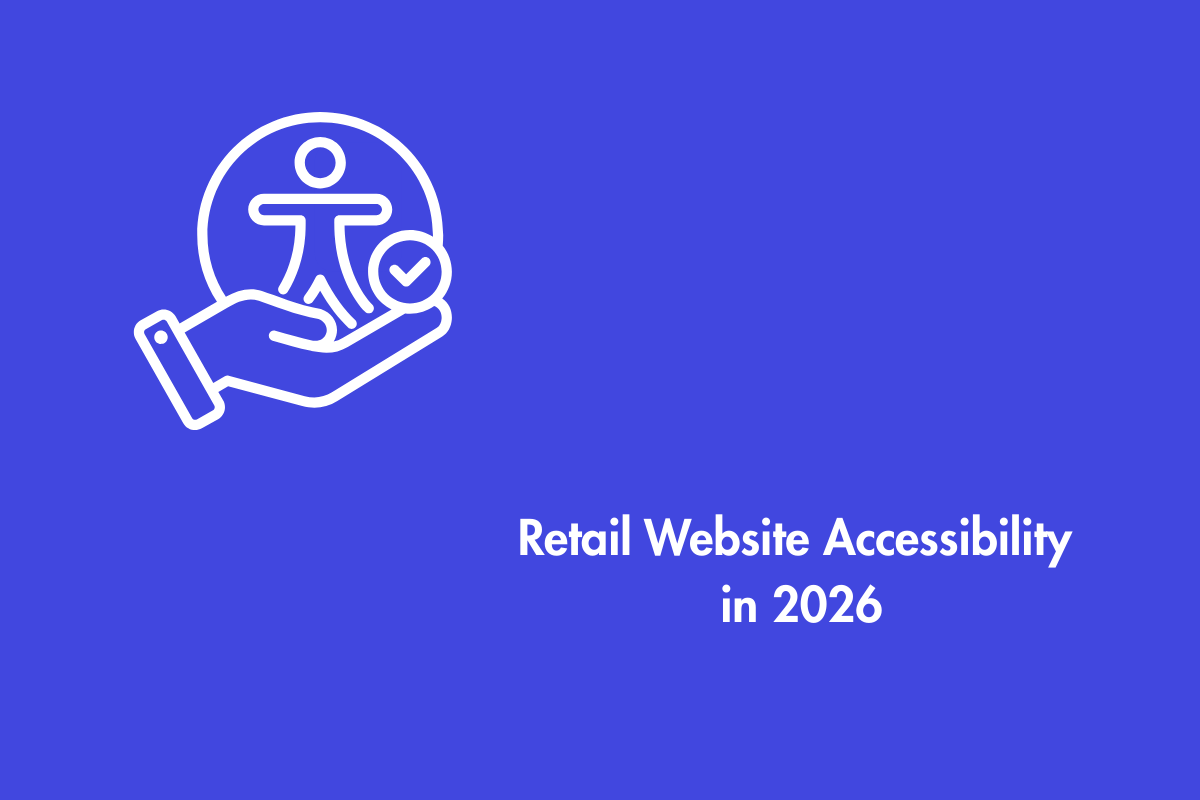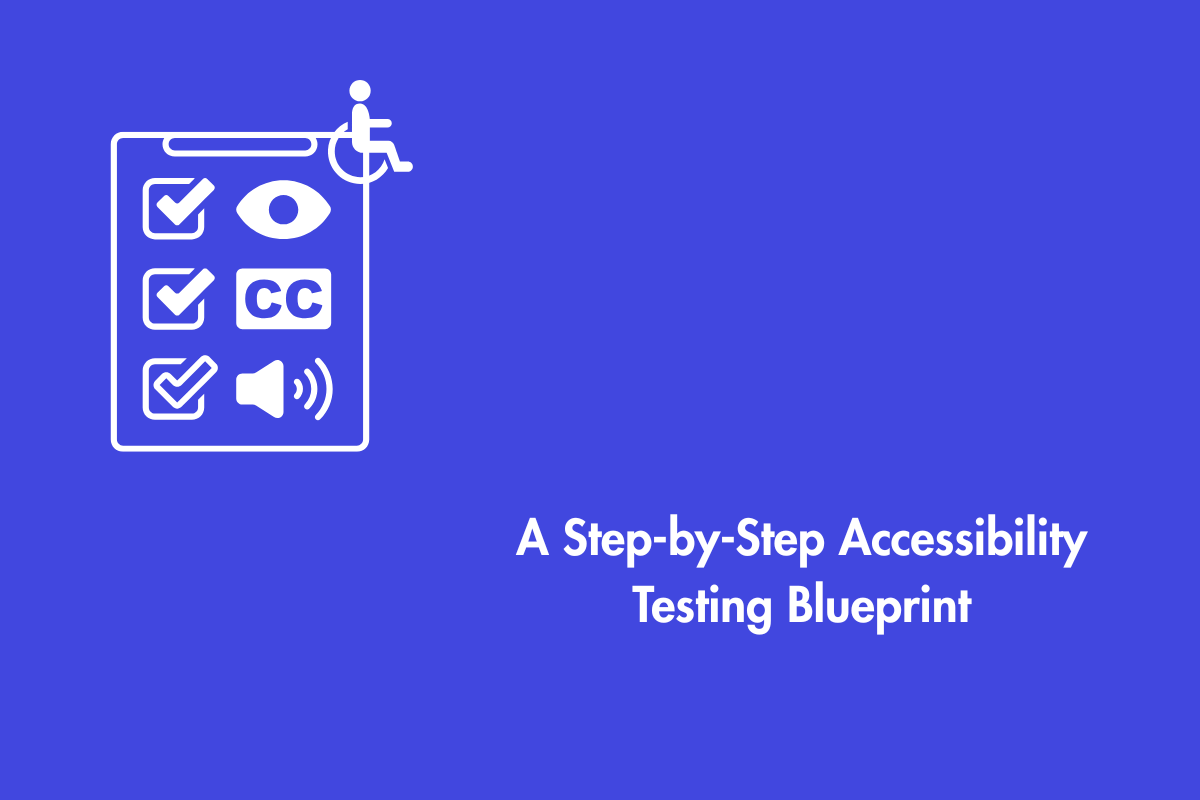Embarking on a journey that pledges to create job openings, provide scrumptious cuisine, and uphold positive community values, venturing into the fast-food business is an exciting decision. This sector stands among the world’s fastest-growing, with the global fast-food market projected to experience a compound annual growth rate (CAGR) of 5.1% from 2020 to 2027.
While ensuring website accessibility for individuals with disabilities requires effort, constructing a comprehensive roadmap with actionable steps can help evade significant financial, legal, and ethical consequences by prioritizing accessibility in design.
Web accessibility involves creating digital content to be inclusive for every customer. This entails incorporating elements such as,
- keyboard-friendly navigation,
- text alternatives, and
- suitable color contrast on their websites.
As of 2023, the United States is home to a significant number of 201,865 fast-food restaurant businesses. Yet, the absence of website accessibility for these businesses could lead to exclusion for individuals with disabilities, resulting in social isolation and impeding their access to crucial resources.
Table of Contents
- 1 Web Accessibility Essentials: ADA and WCAG for Eateries
- 2 Restaurants and Accessibility: Beyond Quick Fixes
- 3 Simplifying Access: Streamlined Navigation for All Visitors
- 4 Quick Load, Wider Reach: Enhancing Web Accessibility
- 5 The Multi-Layer Benefits of Accessible Restaurants Websites
- 6 Legal Perils of Neglecting Website Accessibility
- 7 Digital Access Success Stories:
- 8 Emerging Trends: The ADA Tax Credit’s Impact on Next-Gen Digital Inclusion
Web Accessibility Essentials: ADA and WCAG for Eateries
For many restaurants, fast food establishments, and hospitality businesses, adhering to specific web accessibility compliance standards is crucial.
- Title III of the Americans with Disabilities Act (ADA)
- Web Content Accessibility Guidelines (WCAG) 2.1
Does your business website adhere to WCAG guidelines and ADA compliance? If unsure, it’s worth looking into.
- Recent news highlights the U.S. Supreme Court’s rejection of Domino’s appeal regarding a blind individual’s inability to order from their website, raising awareness about ADA violations.
- This holds significance for all eateries, as ADA compliance now extends beyond physical spaces to websites and apps, emphasizing the importance of accessibility on business websites.
- When considering food insecurity, cost and location are the primary barriers that typically arise.
- However, when we focus on inclusivity on online platforms, digital accessibility in the food industry stands out as a frequently overlooked barrier within many food assistance programs, missing from their core strategies.
In the United States, food insecurity has gained significant attention nowadays. Traditionally, government food programs have taken the lead in addressing this problem, but private initiatives now play a significant role as essential sources of assistance that are instrumental in tackling the problem.
Restaurants and Accessibility: Beyond Quick Fixes
- The fast-food restaurant industry stands out as one of the world’s most rapidly growing sectors.
- Both local and international food chains strive to meet customers’ various demands by offering a wide range of products and services.
- Fast foods are produced in large quantities for commercial sale, with a strong emphasis on providing quick service. This type of food was initially developed as a strategy to cater to the needs of commuters, travelers, and wage workers.
- Just as fast-food chains promise quick and easy meals, some companies offer a seemingly effortless fix for web accessibility, urging users to press shortcuts like Alt + 1. Some overlay companies claim an AI-driven solution, aiming to revolutionize accessibility by 2025.
- However, like a fast-food facade, these solutions often mask deeper inequalities, exploiting the desire for inclusivity while failing to address the root issues.
Simplifying Access: Streamlined Navigation for All Visitors
An accessible website enables people with disabilities to navigate, read, and interact with your site, even if they rely on tools like a keyboard or screen reader.
When addressing digital accessibility in food retail, reviewing your website’s user-friendliness is a good practice to ensure inclusivity for all customers. Following international standards like the Web Content Accessibility Guidelines (WCAG) allows all users to access your content seamlessly.
To begin, your website should:
- Attach proper alt text to images for screen readers or Braille devices interpretation.
- Incorporate headings, legible fonts, color contrast, and whitespace.
- Employ descriptive URLs, photo captions, and text.
- Avoid using any PDF menus on your business website.
Some food for thought:
- About 63% of Google searches start on mobile devices.
- 90% of consumers research restaurants online before dining.
- 52% of consumers are less likely to interact with a company due to a poor mobile experience.
- Using PDF menus on your site goes against mobile optimization best practices, as it compels users to download files unsuitable for small screens. Instead, offer a digital menu in plain text format, aiding those with disabilities and assistive devices.
Incorporate menu photos:
Consider QR Code menus:
- A contactless QR code menu offers benefits like easy updates, cost reduction, and eco-friendliness due to its digital nature.
Quick Load, Wider Reach: Enhancing Web Accessibility
Performance is a vital aspect of web accessibility for food and beverage websites; it’s a subset within the broader spectrum. Enhancing performance leads to improved accessibility. In this context, accessibility can be understood in two ways:
Expanding Reach Through Performance:
- By enhancing performance, a website becomes more accessible to a broader audience. For instance, consider YouTube’s feather version.
- Although its loading time was longer for users with slower internet connections, this version allowed people who typically couldn’t use the regular site to access and utilize the service. Performance improvements thus extend usability to new users.
Enhancing Usability for Assistive Technologies:
- Optimizing performance also enhances accessibility for those relying on assistive technologies such as screen readers or braille devices.
- The process of exposing web content to these technologies involves multiple steps that might take longer than expected, even on a fast-rendering page.
- Given that average worldwide device speeds are slower compared to our pocket devices, performance improvements optimize access for everyone.
The Multi-Layer Benefits of Accessible Restaurants Websites
Creating a fast-food restaurant website that prioritizes the needs of all users and their overall experience ensures an accessible and user-friendly site.
Designing a website that caters to all visitors without exclusion enhances its user-friendliness and inclusivity.
Numerous individuals encounter obstacles when navigating websites, often leading them to leave quickly.
However, prioritizing website accessibility can yield significant advantages for your brand, especially in the context of the US fast food industry, which boasts a colossal market size of $331.41 billion in 2022.
It showcases your commitment to social responsibility and inclusivity, enhancing your reputation. This resonates with a broad spectrum of users, fostering positive experiences that increase word-of-mouth recommendations. This ripple effect particularly resonates within the sizable disabled community, which comprises a significant 25% of potential consumers.
This dedication to accessibility doesn’t merely fulfill legal requirements like the ADA; it brings forth a plethora of benefits that resonate across the spectrum:
Enhanced User Experience:
- An accessible website doesn’t just benefit those with disabilities; it enhances usability for everyone seeking a quick, savory bite.
- By optimizing accessibility, you create a user-centric interface that’s intuitive, smooth, and comprehensible.
Expanded Audience Reach:
- Prioritizing accessibility widens your reach within the fast-food sphere, embracing those who were previously excluded due to disabilities.
- This inclusivity fosters a sense of belonging and drives heightened traffic, engagement, and conversions on your site.
Increased SEO Performance:
- Incorporating accessibility features such as descriptive alt text for mouthwatering images, proper heading hierarchy, and informative links doesn’t just tantalize taste buds; it bolsters your website’s search engine visibility.
- This optimization enhances the chances of achieving higher rankings on search engine results pages (SERPs).
Elevated Brand Standing:
- Within the dynamic fast-food landscape, demonstrating your commitment to inclusivity results in satisfied customers and amplifies your brand’s reputation.
- Such dedication to diversity resonates profoundly, appealing to consumers who value inclusive practices.
Mitigated Legal Exposure:
- Beyond compliance, an accessible website in the realm of fast food mitigates legal risks.
- This proactive approach helps prevent potential legal actions, sparing your brand from costly lawsuits, negative publicity, and reputational damage.
Legal Perils of Neglecting Website Accessibility
Businesses that neglect to ensure their website accessibility for individuals with disabilities will face the risk of legal action under:
- The Americans with Disabilities Act (ADA) or
- Various state laws, including California’s Unruh Civil Rights Act,
The count of digital accessibility lawsuits filed in federal courts in the United States under the ADA is projected to reach 4,220 cases by the end of 2023. This marks an increase of 185 cases from the previous year and nearly doubles the 2,314 cases listed in 2018.
Unfortunately, restaurants find themselves especially vulnerable to legal challenges related to ADA compliance due to the intrinsic nature of their operations.
For a considerable number of restaurants, their website serves a dual purpose, functioning not just as a menu but also as a means to place food orders.
As the online representation of “goods and services” aligns with what’s available in their physical establishments, the website becomes accountable to the same regulatory criteria as the restaurant’s brick-and-mortar establishment.
Digital Access Success Stories:
Digital accessibility plays a pivotal role in web browsing, as highlighted by the pandemic’s impact on restaurant websites. These sites blend e-commerce tools with thoughtful design in line with ADA guidelines. By embracing accessibility, eateries ensure fair access, underscoring inclusivity’s importance.
- Young Joni in Minneapolis (youngjoni.com), led by Ann Kim, a cherished restaurant covered in prominent publications, invests in an inclusive website reflecting its ambiance. Accessibility best practices and a statement reaffirm adherence to standards.
- Shy Bird in Cambridge (shybird.com) excels in rotisserie and digital accessibility. Their site includes a footer accessibility statement aligned with W3C standards. Going beyond that, they utilized a platform for alternative navigation, accessible through a blue icon.
- Emmy Squared in NYC (emmysquaredpizza.com) offers vital information for first-time visitors: hours, location, contacts, menus, and enticing food visuals. An accessibility tool showcases their commitment to an accessible experience.
Emerging Trends: The ADA Tax Credit’s Impact on Next-Gen Digital Inclusion
The ADA Tax Credit stands as a federal incentive for businesses to enhance digital accessibility for individuals with disabilities. This credit covers 50% of eligible expenses, capped at $5,000 annually.
To qualify, businesses must either:
- Have gross receipts of $1 million or less in the prior tax year.
- Employ no more than 30 full-time workers during the prior tax year.
Claimable for costs incurred within the tax year, the credit encompasses expenses like:
- Conducting accessibility audits
- Procuring software or hardware for improved accessibility
- Enlisting consultants or developers to enhance accessibility
- Training staff in web accessibility best practices
This credit proves advantageous for businesses aiming to make digital content inclusive. It offsets accessibility improvement expenses, ensuring universal content access. Notably, website accessibility yields benefits beyond
- The disabled community,
- Enhancing user experience,
- Expanding reach,
- Boosting SEO,
- Solidifying brand reputation, and
- Minimizing legal exposure.
ADA compliance offers not just legal adherence but also shrewd business strategy. An accessible website extends the user base, elevates the experience, and boosts search rankings.
Furthermore, investing in accessibility safeguards against costly litigation and underscores dedication to inclusivity and social responsibility.
Today, businesses, regardless of size, can achieve web accessibility while utilizing the ADA Tax Credit to offset expenses.
Whether a small enterprise or a corporate giant, prioritizing ADA compliance ensures equitable access to products and services for all.
Wrapping up
Digital accessibility should not hinder progress. Adhering to inclusive design best practices paves the way for fast-food businesses to expand and tap into new markets. For assistance regarding web accessibility, reach out to us at info@aeldata.com. We’re here to support your journey.



